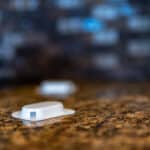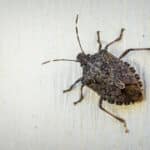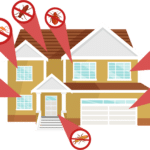Did a pest nest outside or inside your home? If you’re not sure what just made your home its new abode, take a look at the top pest nest questions answered.
Where Are Pest Nests Found?
The answer to this question depends on the pest who has made your home theirs. You can find nests outdoors, indoors, on outdoor structures, in outdoor structures, in the garden, under the ground, on your home’s gutters, in trees, or almost anywhere else you can think of.
Even though pest nests are found in plenty of places, some invaders only build their homes in specific spaces. An exterminator may use the placement of the nest (combined with other factors) to identify the pest in your home or on your property. Common household pests and their nest placements include:
- Yellow jackets. These stinging pests may nest in attic eaves, wall voids, or outdoors underground.
- Ants. According to the National Pest Management Association’s (NPMA) PestWorld website, 700 plus ant species live in the United States. The type of nest you find depends on the species. Ant nests are often found hidden underground, behind rocks, in trees, or in your home.
- Paper wasps. The paper wasp may make its home in a porch ceiling, under hanging outdoor objects, or in trees.
- Rodents. Bugs aren’t the only pests that nest in or near homes. Mice and rats may build nests in wall insulation, attics, or crawl spaces/wall voids.
While these aren’t the only pests to nest in and outside of homes, stinging insects, ants, and rodents are top intruders. If you aren’t sure what type of pest built the nest, leave the area and wait for a professional exterminator. Some pests, such as yellow jackets, pose a stinging hazard.
What Do Common Pest Nests Look Like?
Now that you know where to find nests, it’s time to take the next step and learn more about what these pest homes look like. This is a second clue, and helpful tool, in pest identification. If you can’t get close enough to the nest to inspect it, take a photo from a safe distance — especially if you suspect the nest belongs to a yellow jacket, wasp, or other stinging/biting pest.
Like placement, the nest’s appearance varies by pest. These may include:
- Yellow jackets. These nests are built from chewed cellulose material — such as paper or cardboard.
- Ants. Ants often make nests from the natural materials surrounding their outdoor homes, such as dirt and soil. These often look like mounds. Some ants, such as carpenter ants, may nest in homes made from wood — including trees, other plant materials, or your home’s wooden structure.
- Paper wasps. Like yellow jackets, paper wasp nests are built from paper materials. The wasp creates hexagonal cells in an upside-down umbrella shape.
- Rodents. The appearance of a rodent nest may change by the species. You may notice shredded paper, fabric, insulation, or cotton materials in the nests. These are typically not left out in the open. Instead of the full nest, you may see a hole in a baseboard leading to the rodent’s home.
Given the similarities between some pests’ nests (such as stinging insect outdoor nests), a professional exterminator can identify the nest by appearance. After the exterminator confirms the type of pest that’s inside the nest, they’ll create a treatment plan. Even though you may have already identified the pest, only a qualified professional should exterminate the area.
Do you have a pest nest in or on your property? Contact Diam Pest Control for more information on inspection, identification, and elimination. Along with pest extermination, talk to the professional about nest removal and preventive treatments.





